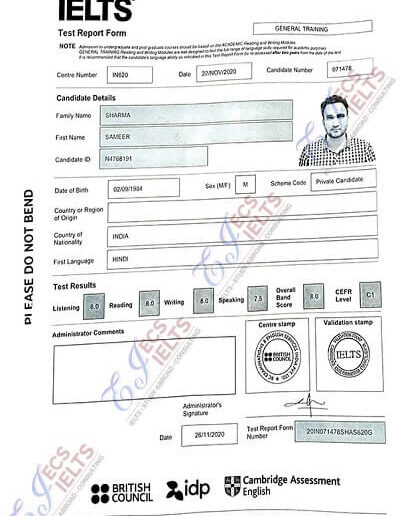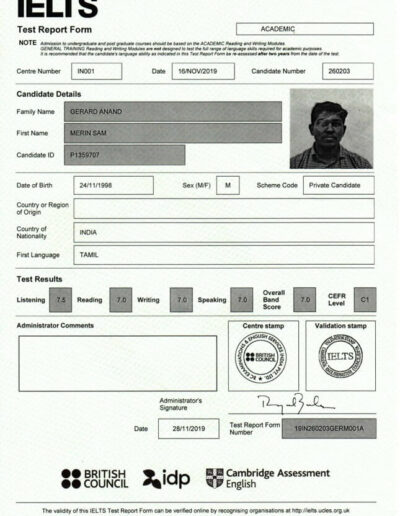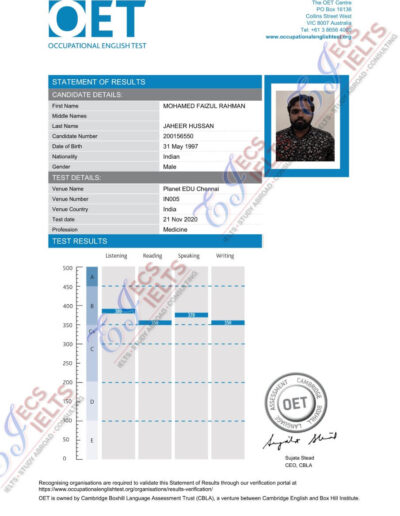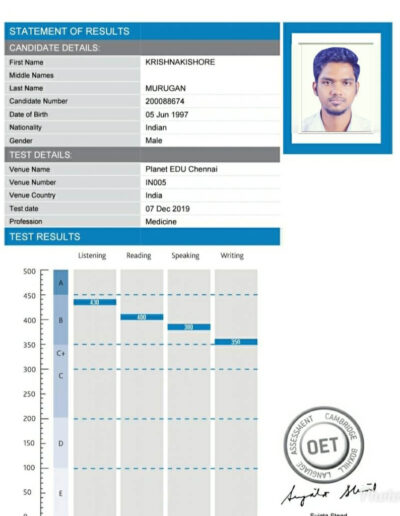IELTS ACADEMIC AND TRAINING
For people applying to admission at a college or university in an English-speaking country.
For individuals moving to an English-speaking country (usually the UK, Australia, or Canada) and/or applying to training programs or jobs in said countries.

IMPORTANCE OF IELTS
More than 10,000 organisations globally trust IELTS, so when you take the test you can be confident that it is recognised by educational institutions, employers, governments and professional bodies around the world.
As one of the pioneers of four skills English language testing 30 years ago, IELTS continues to set the standard for English language testing today. Governments in Australia, Canada, New Zealand and the United Kingdom use IELTS to process immigration applications.


WHY PEOPLE SIT FOR IELTS
Your IELTS score will show whether or not you’ll be able to complete the coursework in English. At certain institutions, your acceptance is contingent on your ability to achieve a certain IELTS score.
There are two main reasons people sit for the IELTS
SEARCHING FOR JOB
If you’re applying for a job in an English-speaking country, but speak another language as your native tongue, you may need to take an English-language comprehension exam like the IELTS to prove that you have the proficiency to work effectively.
APPLYING FOR UNIVERSITY
If you’re applying to study at an English-speaking college or university, you may need to take the IELTS to prove your English-language comprehension.
AREAS FOR IELTS
The IELTS test is similar to the TOEFL, which is another common English comprehension exam. IELTS Coaching Chennai, Pondicherry.
Your proficiency in four main areas is tested in IELTS. These areas are:
READING
WRITING
LISTENING
SPEAKING

MODULES OF IELTS
There are four distinct parts of the IELTS exam. The total test time is 2 hours and 45 minutes. Three of the sections (Listening, Reading, and Writing) are completed in one sitting. The final section, Speaking, may be completed on the same day or up to seven days before or after the other sections. All test takers take the same Listening and Speaking tests. The Reading and Writing sections differ depending on whether the test taker is taking the Academic or General IELTS exam. Let’s look at the four modules in more detail.
Listening
The Listening module has four sections with ten questions in each. Sections 1 and 2 are typical social situations. Sections 3 and 4 are education and training situations (such as a discussion between two university students). During this section, test takers listen to a recording and then must answer questions based on what they’ve heard.
Reading
The Reading module has three sections. Test takers will read three texts, which may come from books, journals, magazines, newspapers, or other forms of media. After reading the text, test takers must answer multiple-choice and short answer questions.
Writing
The Writing module is comprised of two tasks. For the first task, test takers must write at least 150 words in 20 minutes. For the second task, test takers must write at least 250 words in 40 minutes. The tasks and topics vary depending on whether the test taker is taking the Academic or General Training Exam.
Speaking
The Speaking module is a face-to-face interview during which the test taker sits with an examiner and has a conversation. The module has three different sections:
- Introduction
- Long Turn
- Discussions
REGISTER FOR IELTS
There are more than 50 IELTS test centers in the United States and hundreds aboard. In order to register, you’ll first need to find the test center nearest you using the search engine on the official IELTS website. Once you’ve found your test center, you’ll decide whether you want to take a paper or computer version of the test. Next, you’ll fill in your application details (including name, contact information, first language, passport number). Finally, you’ll choose where to send your IELTS scores to. Let us look at these steps closely:
STEP 1
Find your nearest IELTS test location
With more than 1,600 IELTS test locations in over 140 countries, there is bound to be one near you.
STEP 2
Register for your IELTS test
You can register and pay online or download an application form to print, complete and submit to your local test centre. Don’t forget to provide a copy of your valid identity document. You will also need to present the same identity document on the day of the test.
STEP 3
Your IELTS test is booked
Once your application has been processed, the centre will send you a written confirmation of the date and time of your test. The Speaking and Writing tests typically take place on the same day. If this is not possible, the tests will take place within seven days of each other.
There is no specific score you need for the IELTS exam
what constitutes a good score will depend on what you need to accomplish. If you’re applying to higher education, for instance, the university may have specific standards for the score you need. The same goes if you’re applying for a job. It’s best to check with the institution you’re applying at to see what score you’ll need. Taking an IELTS practice test can help you raise your score if you’re struggling with your IELTS preparation.













